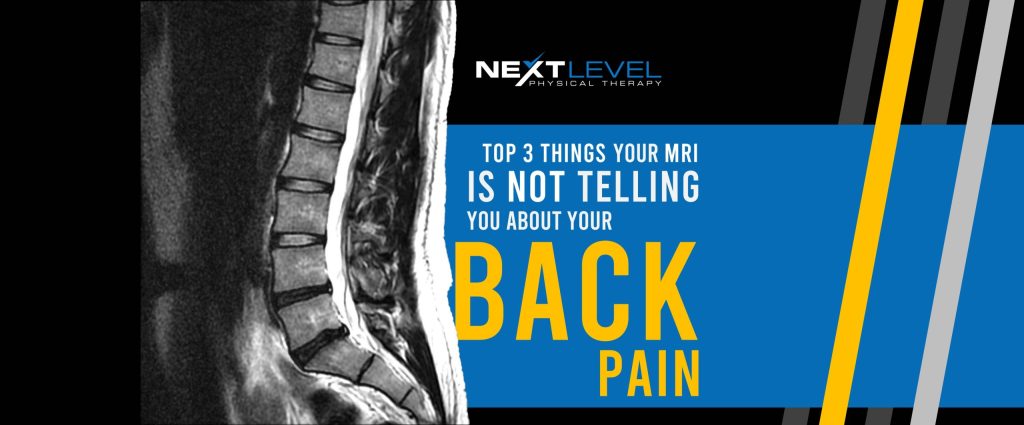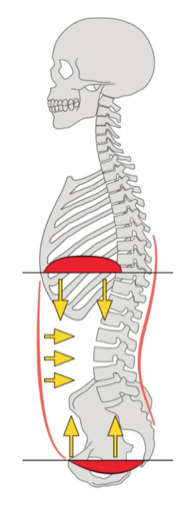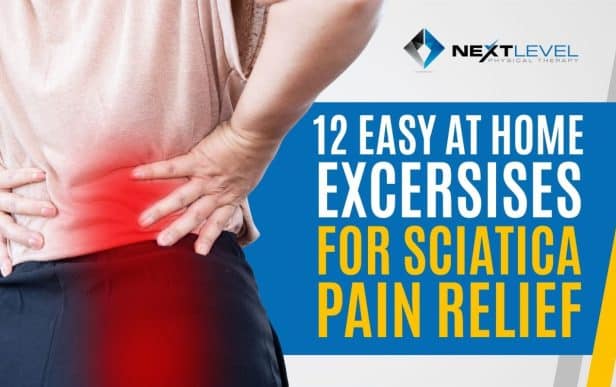Author: Dr. Artem Imnadze, DPT
A common question or concern that often arises in the clinic is whether physical therapy treatment for lower back pain will work if there are positive finding on an MRI or X-Ray. This is an understandable concern as traditional thinking would have you believe that structural issues found on imaging is typically the source of pain. Right? Not quite! Oftentimes, imaging findings, unless directly correlated with very specific symptoms, tend to be more of a sign than the actual root cause of pain. Relying too heavily on imaging for answers about why you’re having back pain can cause you to miss the mark in resolving deeper- rooted movement based issues that are actually leading to your pain.
A typical MRI or X- Ray of an individual with lower back pain may show disc degeneration, disc herniation or bulging, osteophytes (bone spurs), stenosis, loss of disc height, spondylosis/spondylolisthesis, etc. Now, while some of these findings may be totally normal age- related changes (it’s normal for discs to shrink as you age), others, such as disc herniation are indicative of structural damage.
-
Structural Damage Does Not Equal Pain
One very important concept to understand when dealing with back pain, or pain in any region for that matter, is that damage does not equal pain. Pain is one of the most complex processes in the human body as it involves so many different factors including biomechanics, neurology, endocrinology, psychology, etc. Due to this inherent complexity, there is not a 1 to 1 relationship between when things hurt and damage to structure. This is why research consistently finds a high percentage of people with no back pain at all but have positive findings on an MRI including disc degeneration and even herniations! The same goes for people who have no structural damage whatsoever, based on imaging findings, but are in severe pain.
-
Your Symptoms May Not be Related to Imaging Findings
It’s important to corelate imaging findings with clinical signs or symptoms. Oftentimes, pain due to structural damage tends to be constant, unrelenting and may times is accompanied by nerve related symptoms such as numbness, tingling and burning. An easy example is Sciatica due to nerve compression in the spine.
Despite MRI finding like disc herniations or degeneration, signs that your pain may not be related to the imaging finding include intermittent symptoms, pain exacerbated only with very specific movements and lack of nerve-related symptoms like numbness, tingling and burning.
If you’ve had back pain for a long time, there’s a good chance whatever structural issues were found initially are long healed by now! The human body is amazing in its ability to adapt heal. For instance, research shows that disc herniations typically heal within 6-12 months. Even more amazing is the fact that typically the worse the herniation is, the faster it will heal. That means that if you’re still dealing with pain after that time, you’re likely dealing with symptoms of an underlying movement dysfunction that probably lead to the structural damage in the first place!
-
What the Root Cause of the Pain is
Even though imaging findings, such as a disc herniation, may not be the thing causing your back pain, it does clue us in to what could be leading to your pain. For instance, disc herniations typically arise due to weakening of the posterior or backside fibers of the disc. As the disc structure weakens it becomes easier to damage. It’s usually an inconspicuous act like sneezing or bending over that acts as “the last straw.” This weakening is usually due to lack of blood flow which brings vital nutrients to keep the disc healthy.
Blood flow to the disc will be limited when the backside of the spine is compressed. This compression typically occurs in a position of spinal extension (think bending backwards). If your body is stuck in certain postures or patterns of moving that cause you to bias extension of the spine, this can lead to the lack of blood flow and disc weakening. Many times these patterns are a result of stress, learned habits and repetitive activities. The solution is not zeroing in on the resultant disc damage but focusing on resolving the underlying patterns that led to the damage and the pain in the first place.




